For many people, ducks are not the first poultry species they keep. Often backyard chicken farmers add a few ducks to their flock, assuming raising them is relatively similar. This is what I thought, and I was so wrong!
Ducks are no easier or more difficult to raise than chickens, but they behave very differently and have vastly different requirements.
Ducklings need to be kept in a brooder until their feathers have grown enough to keep them warm outdoors. They can slowly be transitioned into a safe pen in the yard and introduced to water.
Ducks need fresh water and bedding each day. Their food must be soaked in water, and they need chick grit.
If you are considering getting a few ducklings to raise and keep for eggs, you have come to the right place! This article will fully prepare you with the knowledge you need to raise ducks.
The benefits of having a backyard flock of quackers is endless. Not only are they unquestionably adorable, but they are also fantastic for slug and snail control in your garden, and lay huge, decadent eggs.
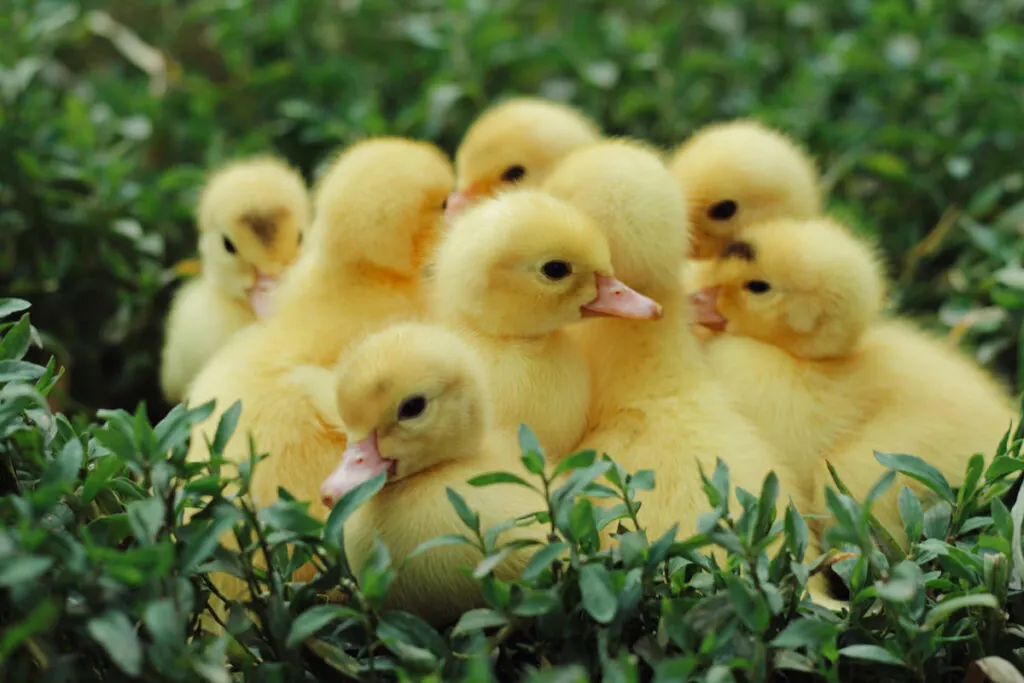
Table of Contents
Choosing the Right Ducklings for You
The most popular breeds of ducks to keep for eggs are Indian Runner, Buff Orpington, and Khaki Campbell. These breeds lay consistently through the year and produce large eggs.
Rouen ducks are a great meat breed. They are average layers. Pekin ducks are a dual-purpose breed. They lay a large number of high-quality eggs and are renowned for their unique, delicious meat.
Day-old ducklings are available to buy from hatcheries, pet stores, or farming supply stores. People in rural areas often have ducklings for sale in the spring. Ducklings generally cost $1-$5 each, depending on their breed and age.
If you are nervous about the idea of brooding young ducklings, you can buy a duck that is a few months old for $10-$20, depending on the breed.
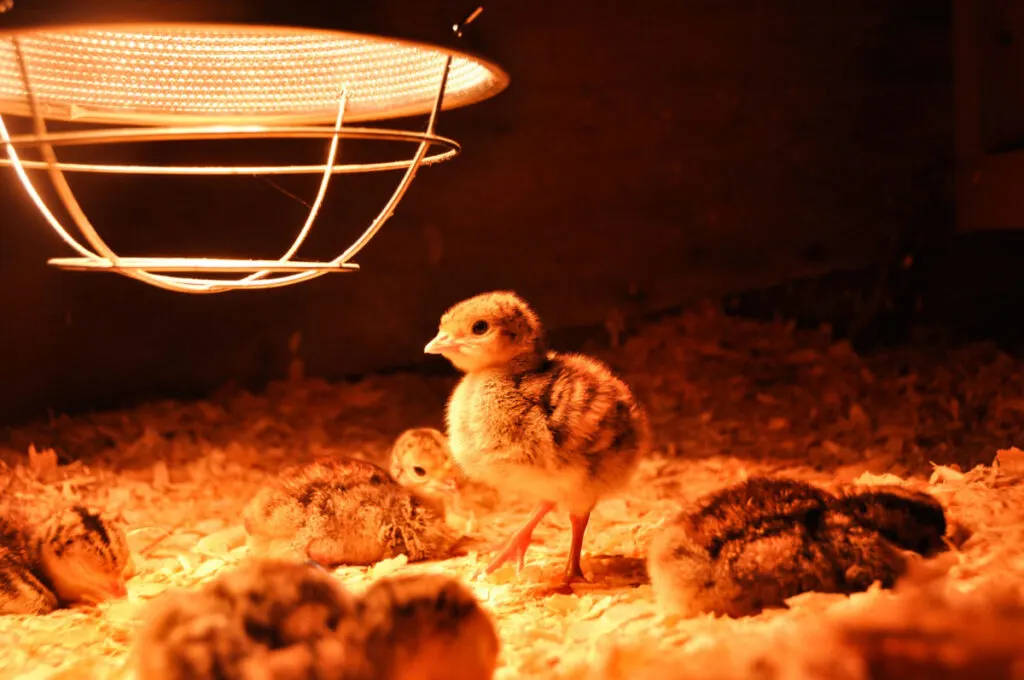
What You Need to Care for Ducklings
It helps to be prepared when you raise ducklings. It just makes the entire process hassle-free and enjoyable. Before bringing those adorable quacking bundles of fluff home, make sure you have all the following equipment and supplies at hand:
- A brooder with a heat lamp and thermometer.
- Dry bedding – pine shavings is best.
- Unmedicated chick feed.
- Brewer’s yeast – contains niacin.
- Chick grit in a small, shallow dish.
- Chick waterer. You can use one designed for chicks or just use a ramekin.
- Shallow container for food – terracotta plant saucers work well.
- Painting tray to fill with water.
- Large, plastic shallow container – a clean cat litter tray is the perfect shape and size.
- Fine mesh that fits over the plastic tray and can support the waterer.
In the first few weeks of having your ducklings, they will stay mostly in their brooder. This gives you time to prepare a pen for them so that they can start spending time outside. You also need to build a safe coop for them to sleep in at night.
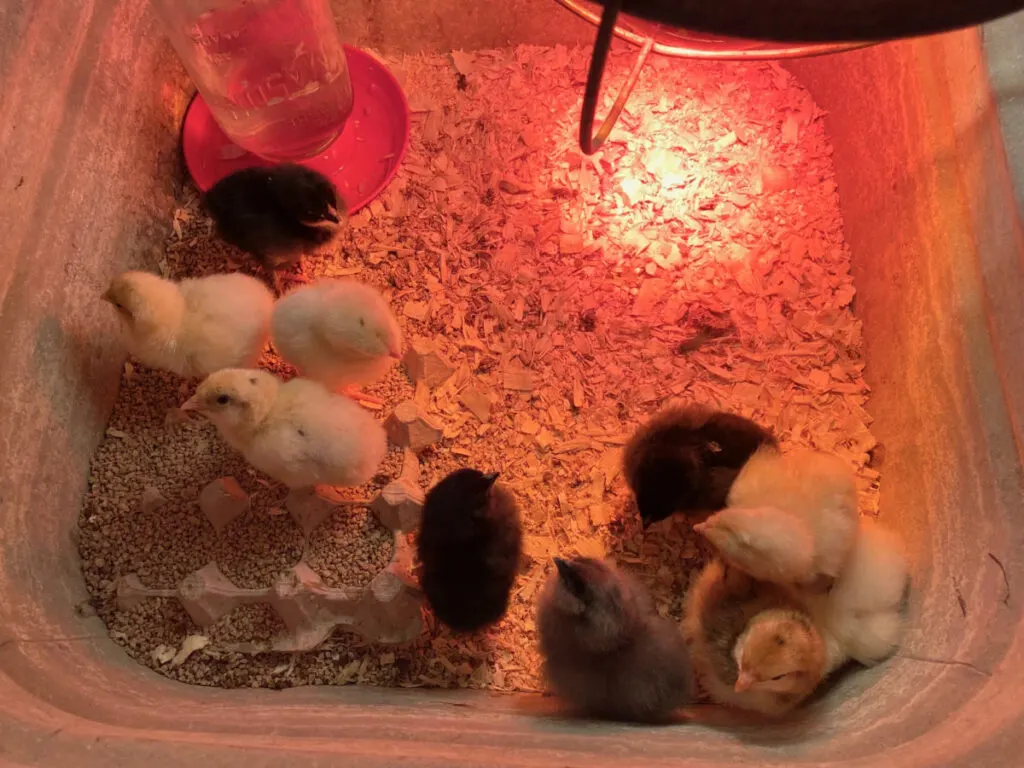
Tips for DIY Brooders
You can easily build your own duckling brooder from objects you have lying around the house and yard. A large plastic tote box, galvanized tub, plastic children’s pool, or even a large cardboard box works well for keeping ducklings warm and safe for the first few weeks.
A brilliant method of brooding ducklings is in a spare bathtub. It helps to have a drainage hole because ducks love to splash around in their waterer and get their whole brood box soaking wet. A bathtub can be lined with a few layers of newspaper and filled with pine shavings to absorb excess moisture.
Bathtubs are convenient because you can just close the bathroom door, and the ducklings are safe from pets, small children, and other dangers. Otherwise, keep the brooder in a secure garden shed or somewhere safe and warm.
A big plastic tote or bathtub is fine for up to 10 chicks, but you may need to build a larger brooder if you are raising more ducklings. Ducklings grow fast and will quickly outgrow their brood box.
It is easy to convert an unused chicken tractor into a duckling brooder. Just add heat lamps and get rid of the perches and the nest boxes.
Set up your brooder to help it stay clean. Create a system to limit water spillage in the brooder – place the waterer on a wire mesh platform inside a larger container. A paint tray or (clean) cat litter tray is a perfect size. Ducklings get water everywhere!
Unless you create a system to catch the spillage from the waterer, you will need to change out their bedding material every day.
Housing Ducklings and Ducks
Your flock of ducks will need a permanent home outdoors where they can sleep safely overnight. A duck coop is very different from a chicken coop.
Ducks are more cold tolerant than chickens, and they do not roost.
They sleep on the ground, so their coop needs more floor space.
Plan for your duck coop to be nice and spacious – each bird should have 4 to 6 square feet of space. Generally, 3 square feet per bird is the minimum space recommended, but this is a bit tight. An old garden shed is perfect for converting into a duck coop.
Ducks need bedding and nesting material. Most people use bales of straw.
Ducks do not lay their eggs in nesting boxes but in piles of straw on the ground. If you want nice clean eggs, you should replace their nesting material daily.
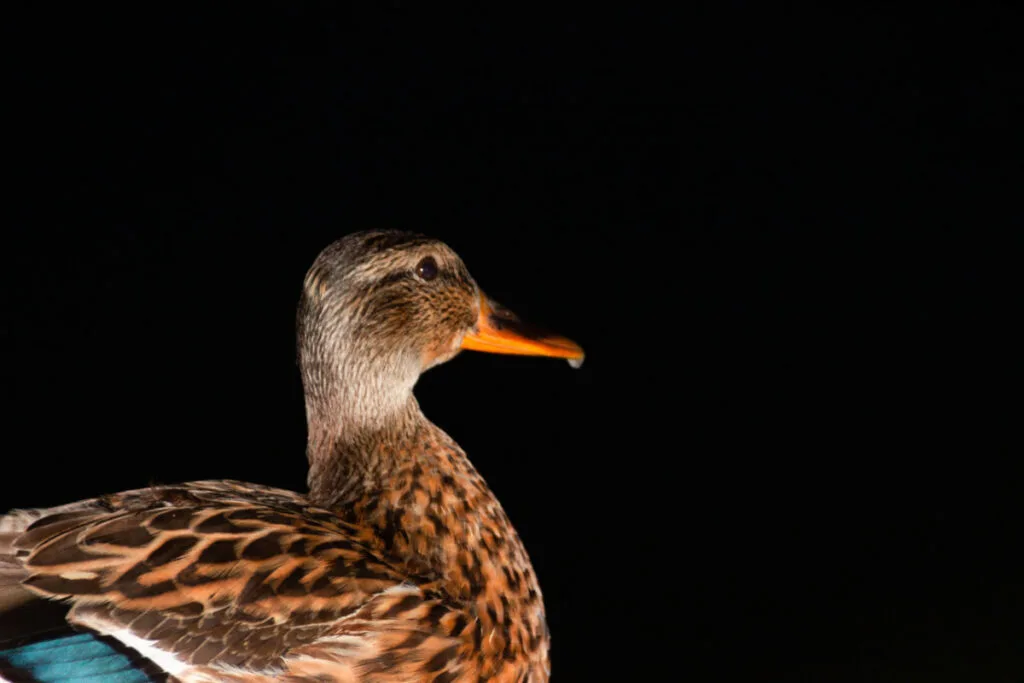
Keep Your Ducks Safe at Night
Secure the coop from predators. Raccoons, foxes, dogs, skunks, coyotes, and weasels are the most common threats. Ensure your duck coop is secure by covering all windows and vents with wire mesh.
Your duck coop either needs to have a secure fence enclosing it on all sides, or it needs to be able to be completely shut and secured overnight.
Fencing must be sunken in well below ground level to prevent burrowing predators, like weasels, from entering. Overhead fencing prevents predators from climbing or flying in.
Having a solid floor of cement pavers or plywood is a good idea. If you have an old doghouse or kids’ playhouse, see how you can convert it into a duck coop.
They do not need an elaborate, fancy structure. They just need a dry place to sleep that is out of the wind and rain and safe from predators.
What to Feed Ducklings?
When you first get your ducklings, you should feed them unmedicated chick feed.
Giving them the unmedicated kind is important because ducklings consume more on a daily basis than chicks, so they will end up over-dosing on medication.
Ducklings do have slightly different nutritional requirements than chicks. Chick feed does not contain enough niacin to meet ducklings’ needs. Be sure to sprinkle Brewer’s yeast onto their food to give them the nutrients they need to grow healthy bones.
Besides chick feed, you can feed ducklings raw oats to boost their protein consumption. Slowly increase the amount of oats in their diet until you are feeding them ¼ oats and ¾ chick feed. Moisten the oats to help them eat it.
Like chicks, ducklings need to consume grit so that they can properly digest their food. Provide them with a small container of coarse dirt or chick grit.
As a treat, you should also give your ducklings some greens. Spinach, Swiss chard, kale, lettuce, peas, chopped grass, and dandelion greens are delicious for ducks.
Chop the leaves up and sprinkle them into the duck’s water container. They enjoy scooping the greens up out of the water, as they would forage in nature.
Ducks feed by taking food in their bill, dunking it in their water and then swallowing the moistened food. As a result, they are messy eaters that get water everywhere. It is critical that you replace their feed daily. Moist feed is a breeding ground for mold and bacteria.
Do not be concerned about overfeeding ducklings. Give them a continuous supply of fresh water and food during the day and at night until they are about 8-9 weeks old. At this stage, they can be left with no food, only water during the night.
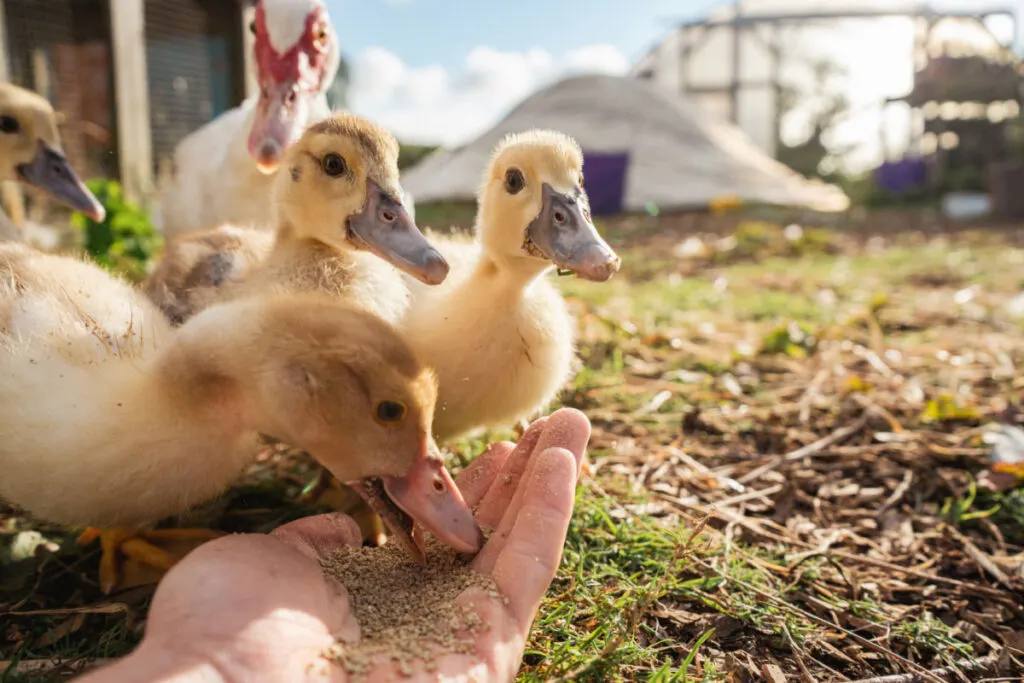
How Much Do Ducklings Drink?
It is critical that ducks always have access to drinking water 24 hours a day. Without it, they can choke on their food!
Their water needs increase rapidly with age. A small duckling that is around 7 days old will consume roughly half a gallon weekly. At around 2 months of age, they drink half a gallon in a single day!
Day 1: What to Do When Your Ducklings Arrive
Ducklings can be delivered in the mail, or you can bring them home yourself from the farm supply store. Wherever you get them from, this is what to do with your new day-old ducklings:
- Have their brooder and heat lamp set up and preheated by the time the ducklings arrive. 90°F (32°C) is the ideal temperature.
- Prepare some sugar water at a concentration of 1/3 cup sugar per gallon.
- With the room temperature sugar water in a shallow dish, gently dip each duckling’s bill into the sugar water, showing them where to drink.
- Place them into the preheated brooder with their bedding, food, and water.
Moving Ducklings from the Brooder to an Outdoor Pen
Ducklings need to stay in the brooder under the heat lamp until their feathers have grown in and fluffed up to insulate them. Ducklings are more cold-hardy than chicks and can go outdoors full time at a younger age.
They need to transition from the brooder to their outdoor pen gradually. Lower the temperature in the brooder by 1 degree each day until it is equal to the lowest outdoor temperature. Then the ducklings can move into their safe, outdoor pen.
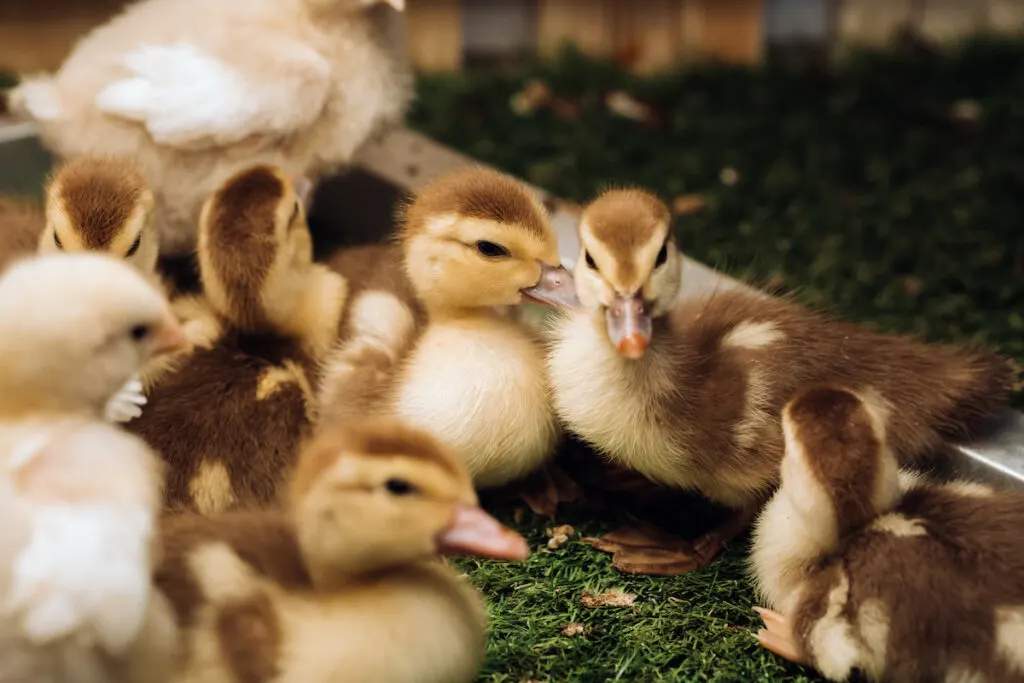
Keep a Close Eye on Ducklings for the First 9 Weeks
Ducklings stay in the brooder for the first 2 to 3 weeks but can start experiencing the outside world when they are 3 to 5 weeks old. Let them spend short periods in a predator-safe pen when the weather is sunny.
At this stage, ducklings’ feathers have not fully developed yet, and they are still too small to regulate their own body temperature without a heat lamp. You need to keep a close eye on your young ducklings. If they happily move around the brooder, they are warm and well. Cold chicks huddle around the heat lamp.
When the little ducklings reach 7 to 9 weeks of age, they have a full coat of fluffy feathers to insulate them. This is when they can start spending longer periods in a pen outside during the day.
When Can Ducklings Start to Swim?
Incubated ducklings are at a slight disadvantage to ducklings that have grown up with their mother in terms of their oil or preen glands. They secrete oils that coat their feathers, waterproofing them. Incubated ducklings’ glands take longer to start secreting the protective oils.
Ducklings can be introduced to water from their first week. However, they must be carefully supervised, as their feathers can easily become waterlogged, and they can drown. You should heat the water slightly to keep the ducklings warm.
Give them a container of water that they can easily walk in and out of. A plastic paint tray is the perfect size and shape – not too deep, with a gradual slope into the water. The ducklings will love waddling around in the shallow water.
When they are around a month old, you can fill a deeper plastic tub with room temperature water and let them swim and splash around for a couple of minutes. Dry them and put them back near the heat lamp to keep them from catching a chill.
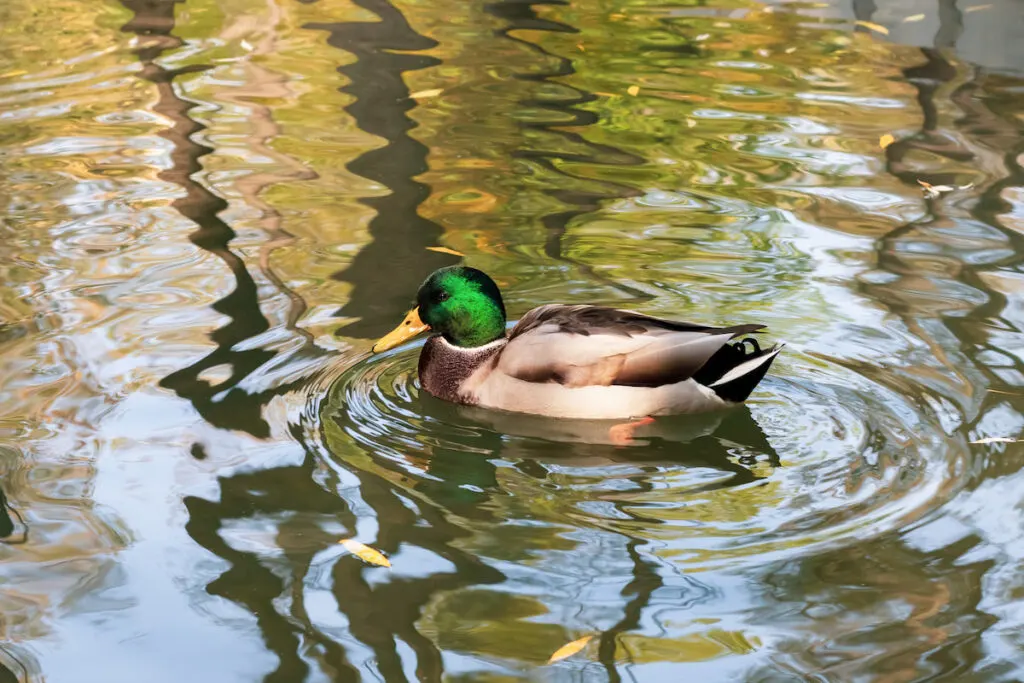
Do Ducks Need a Pond?
In short, ducks can live a perfectly healthy, happy life without having access to a pond or other large bodies of water. However, physiologically, ducks need access to water that is deep enough to stick their whole bill into. They have delicate mucous membranes on their bill and near their nostrils which have to be kept moist.
Their life will not feel empty without a pond to swim around on. They do get a lot of joy from splashing around in shallow water. It is definitely a good idea to have a plastic kids pool or large plastic tub to waddle around in.
Ducks should not have independent access to large containers of water until they are over a month old. Until then, they are at real risk of drowning. Put stones or marbles into deeper water containers to prevent accidents.
Whatever you use as a duck pond, it will get mucky. Depending on the size of your flock, the size of the water container, and the weather, you should generally empty the water out and replace it 3 to 4 times a week or even once a day.
The Ideal Flock Size for Backyard Ducks
For a small backyard flock of ducks, 3 females or 4 or 5 females and 1 male is the ideal size. This will give you enough eggs for day to day needs, and they are easy to manage.
You do not have to keep a male (drake) to get eggs!
A flock size greater than 6 birds starts to become more work, and they go through a lot more feed.
Conclusion
Raising ducks is simple when you are well prepared. Ensure you have a brooder set up with a heat lamp and bedding for them when they arrive home and dunk their little bills into some sugar water before placing them into their brood box.
Ducklings can be fed unmedicated chick starter feed, and you can give them raw oats for extra protein. As a treat, feed them chopped up greens from the kitchen and garden. Ducks love to scoop their food out of the water with their bill.
For the first month, their feathers will not have fully developed yet, and they should stay in the brooder. At 2 months old, they are ready to begin spending time outdoors when the weather is good. Transition them slowly from the brooder to their outdoor home.
You need to build your ducks a secure outdoor pen where they can safely hang out during the day. They need a predator-proof coop to sleep in at night. Ducks sleep and nest on the ground, so provide them loads of straw for bedding and nest material.
Ducks are low-maintenance pets. They do not need a pond to swim around in. Simply give them a kiddie pool or large plastic container to splash around in, and they will be more than happy.
